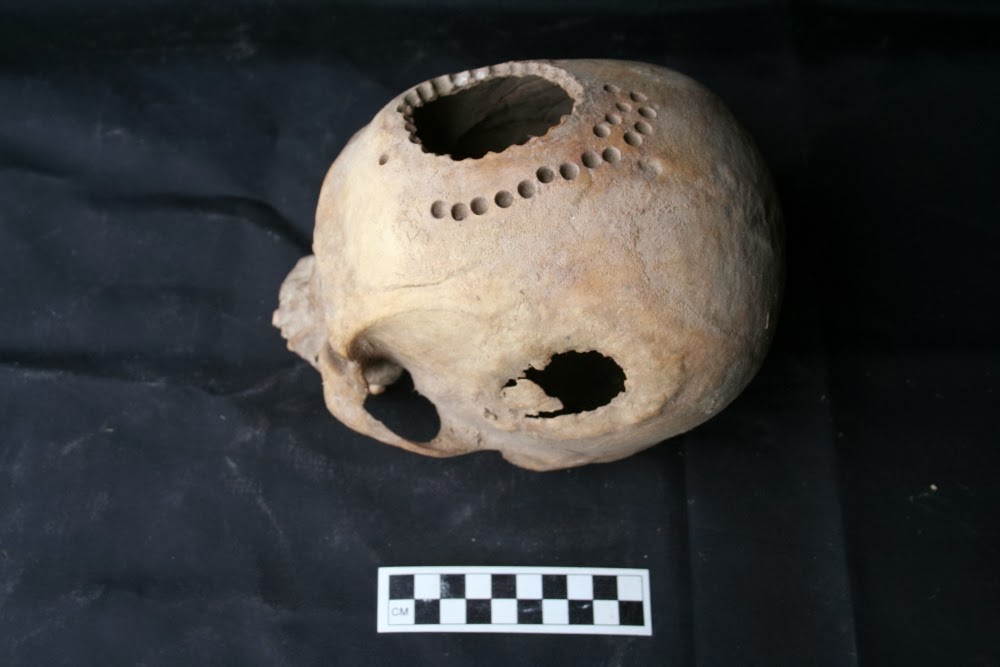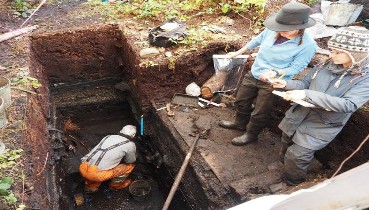
Andean People Already Perfected Skull Surgery Thousands of Years Ago
New bone growth at the trepanation site on the side of the head indicates a successful procedure. However, the holes drilled at the top of the skull were as the individual was dying or shortly after he died. Photo: Photo: Danielle Kurin
By using radiocarbon dating and insect casings to determine how long the bodies were left out before they skeletonized or were mummified, Kurin is able to tell exactly where, when and how the remains she found were buried, as well as who and what was buried with them. Using multi-isotopic testing, she’s even be able to reconstruct what they ate and where they were born. “That gives us a lot more information,” she said.
“These ancient people can’t speak to us directly, but they do give us information that allows us to reconstruct some aspect of their lives and their deaths and even what happened after they died,” she concluded. “Importantly, we shouldn’t look at a state of collapse as the beginning of a ‘dark age,’ but rather view it as an era that breeds resilience and foments stunning innovation within the population.”
By using radiocarbon dating and insect casings to determine how long the bodies were left out before they skeletonized or were mummified, Kurin is able to tell exactly where, when and how the remains she found were buried, as well as who and what was buried with them. Using multi-isotopic testing, she’s even be able to reconstruct what they ate and where they were born. “That gives us a lot more information,” she said.
“These ancient people can’t speak to us directly, but they do give us information that allows us to reconstruct some aspect of their lives and their deaths and even what happened after they died,” she concluded. “Importantly, we shouldn’t look at a state of collapse as the beginning of a ‘dark age,’ but rather view it as an era that breeds resilience and foments stunning innovation within the population.”
Advertisements
22 August 2023
Advertisements



